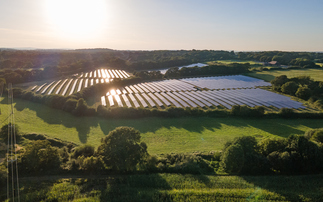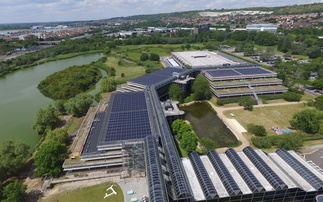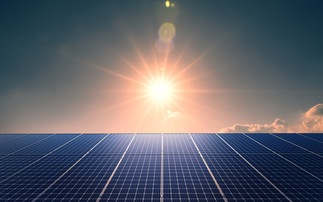Deutsche Bank predicts surge in demand for solar PV led by fast-expanding domestic market
Goldman Sachs this week upgraded stock in solar power developer SolarCity to a 'conviction buy' from a 'neutral' rating, while downgrading First Solar to a 'sell'. The investment bank is realigning its position on PV solar firms, just as multiple analysts point to a "gold rush" in PV solar over the next year.
Stock in SolarCity, which finances and installs solar panels for residential and commercial clients, jumped on the news, climbing to $65.96 on Monday from $59.27 at Friday's close. The firm's stock is at an all-time high, and has almost tripled in value since early May. Conversely, First Solar stock dove almost 10 per cent on news of its downgrade.
One reason for Goldman Sachs' focus on SolarCity over First Solar could be the firm's exposure to rooftop installation business. Analysts are showing a growing interest in the rooftop solar industry as falling panel prices and new financing models have seen installation rates climb in several key markets.
A recent report from Deutsche Bank singled out installers as a particular driver for a "second gold rush" in solar technology, mirroring the first rush for capacity that occured between 2005 and 2007, before being hit by the global economic downturn.
The firm took a broadly bullish position on PV solar in a research note issued this week. "We expect another gold rush by downstream installers to add recurring MW ahead of policy changes over the next two to three years," the note stated, adding that residential leasing would be a particularly hot area.
US installers are aggressively hunting for customers and will continue to do so to take advantage of government policies before they change. One such 'policy window' is the US's Solar Investment Tax Credit (ITC), which provides a 30 per cent tax credit on residential and commercial solar installations. The credit is scheduled to expire in 2016, although it could be subject to Congressional wrangling over whether or not to extend it - a similar situation to the one faced by the Production Tax Credit for wind farm developers.
"Solar leasing companies are highly profitable and have strong incentives to maximise the number of leasing customers ahead of ITC expiration in 2016," stated Deutsche Bank. "While solar leasing is already attractive, we expect lease prices to decline further over the next 18 months and growth to accelerate."
SolarCity has pioneered a business model based to a large extent on its SolarLease offering, which effectively provides households with free installation of solar panels.
According to Deutsche Bank's researchers, the levelised cost of energy for solar will reach a "cash bottom" over the next 18-24 months, due to three main factors: low system prices, competitive financing costs and policy outlook. Solar module prices are at record lows and will continue for at least 1.5 years until interest rates nose upwards, said the report, in spite of projected supply constraints in the poly and wafer markets.
The low cost of solar systems is also contributing to so-called 'grid parity' in many parts of the US, which is in turn a big factor driving deployment rates. Solar energy is currently cost competitive without subsidies in at least 19 markets, and more markets will reach grid parity this year thanks to declining system prices, according to experts.
With module pricing at record lows, balance of system pricing (the price of everything in a solar system other than the panels) will be a focal point over the next three years, which could further drive down pricing, the Deutsche Bank analysts said.
Deutsche Bank's position mirrors that of analyst firm NPD Solarbuzz, which published its own projections for installed PV solar capacity upwards last month.
Executives there said the solar PV industry had reached a "tipping point", and predicted 49GW of demand in 2014, up from 36GW last year. This forecast eclipses even Deutsche Bank's, which predicts 46GW of solar power will be installed this year.
"Demand is growing for a variety of factors, including strong government support in China and Japan," Michael Barker, senior analyst at NPD Solarbuzz, told BusinessGreen. "Falling system prices are making PV more competitive in emerging regions such as Latin America, Southeast Asia and Africa. And a stabilisation in European markets with the ending of the trade disputes and government incentive cuts."






